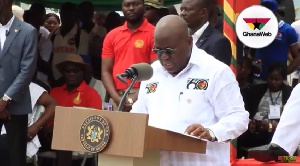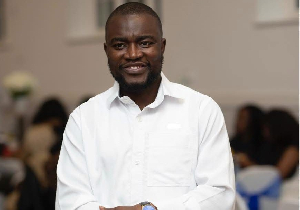President Nana Akufo-Addo has announced three major amendments to the Power compact under the Millennium Challenge Corporation (MCC) which will allow for Private Sector Participation (PSP) in the Electricity Company of Ghana.
The new terms of the agreement, he stated, require that Ghanaians own at least 51% of the concession; a departure from the earlier agreement to give at least 80% to a concessionaire, no involuntary lay-offs as well as the term of the concession would be reduced from 25 to 20 years.
The President was confident these amendments would meet the aspirations of Ghanaians in protecting the jobs of workers and the control and viability of ECG.
The assurances by President Akufo-Addo are aimed at assuaging the fears of the Public Utilities Workers Union (PUWU), who are of the view that the second MCC compact would impact negatively on ECG and result in lay-offs.
According to President Akufo-Addo, government was finding long term resolutions to the nation’s electricity problems. It will be recalled that PUWU, in August 2016, went on strike for three days in protest against the compact, calling on government to review the compact which sought to cede ECG to private investors for a period of 25 years.
PUWU also urged government to rescind its decision to sign onto the compact which could also lead to lay-offs. PUWU vehemently objected to the concession arrangement and proposed propose listing on the Ghana Stock Exchange, leveraging on funds from Social Security and National Insurance Trust (SSNIT) and Second Tier Pension Funds as well as Strategic Business Unit (SBU) concept as some of the ways to raise the needed funds to recapitalize ECG.
ECG requires $1bn investment in 5 years
Analysts say ECG requires a minimum of $1billion investment in the short to medium term, representing between three and five years to resolve distribution problems and guarantee stable power to consumers.
The money would be invested to replace obsolete infrastructure, such as lines, transformers, substations, among others. This means that if government retains 51% of the company after the concession, it would have to provide 51% of the $1billion needed to restructure the company.
The Compact II
Under the Ghana Power Compact, six projects will be implemented to address the root causes of the unavailability and unreliability of power in Ghana.
The project include ECG Financial and Operational Turnaround Project, NEDCo Financial and Operational Turnaround Project, Regulatory Strengthening and Capacity Building Project as well as an Access Project.
The rest are: Power Generation Sector Improvement Project and Energy Efficiency, and Demand Side Management Project.
Ghana signed the pact with the MCC, an independent United States government agency, on the sidelines of the US Africa Leaders’ Summit in Washington on August 5, 2014.
$498m compact
The Ghana Power Compact would provide Ghana with a grant sum of four hundred and ninety eight million, two hundred thousand United States Dollars ($498,200,000) to improve the performance of Ghana’s power sector, unlock the country’s economic potential, create jobs, and reduce poverty.
About $350million of the grant is being invested in ECG to make the country’s power distributor operationally and financially more efficient.
ECG responsible for distribution challenges
Currently, ECG is responsible for most of the distribution challenges because the company has not had the necessary investment to maintain plant and equipment.
Due to weak infrastructure, ECG feeders go off the moment the country experiences a storm.Analysts blame the situation on focusing investments in thermal plants for generation capacity at the expense of investment in ECG.
It is believed that even if government pays all its debt to ECG, that money would, in turn, be used to pay generation companies that ECG owes.
Therefore, the country needed to come up with ways to raise the $1bnillion to invest in ECG to restructure ECG to attract investment since the company is currently not operating as a healthy corporate.
ECG cannot raise capital to invest since it is not in the position to generate enough revenue to pay back.
ECG records 30% systems and distribution losses
Currently, the ECG is estimated to lose over 30 percent of its revenue through systems and distribution losses.
According to experts, these losses translate into about $200 million per annum.
Korean records 3.6% systems and distribution losses. In contrast, Korean Electricity Company is rated as the number one utility company in the world and their transmission and distribution losses is about 3.6%.
It is estimated that between $8 billion and $12 billion would be required by the country for new power generating plants in the next 10 years to ensure reliable power.
Business News of Tuesday, 2 May 2017
Source: The Finder













